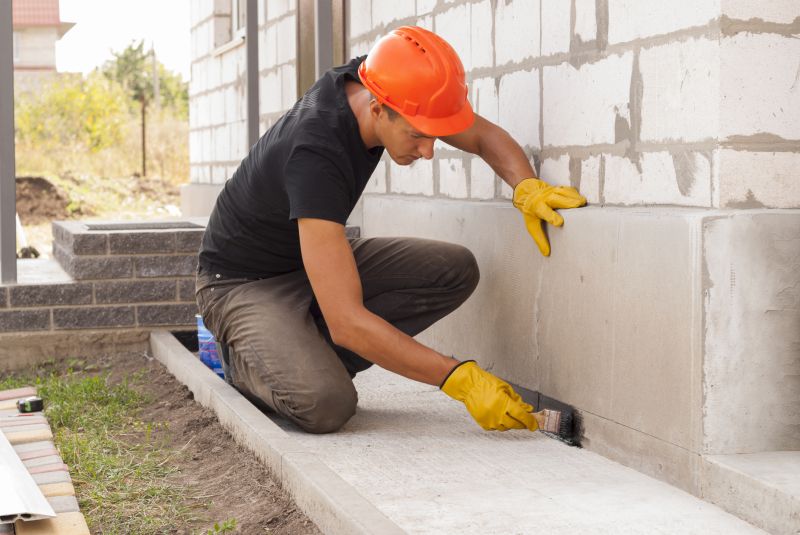Top-Rated Products For Fixing Concrete Walls Quickly and Effectively
Learn about products that simplify the repair process and ensure durable, professional-looking results.
 Concrete wall repairs are a common necessity in maintaining the structural integrity and appearance of buildings, foundations, and retaining walls. When addressing cracks, spalling, or other damage, it is essential to select the appropriate products to ensure a durable and effective repair. The variety of repair materials available allows for solutions tailored to different types of damage, wall compositions, and environmental conditions. Proper preparation and application are crucial to achieving long-lasting results, making it important to understand the options at hand.
Concrete wall repairs are a common necessity in maintaining the structural integrity and appearance of buildings, foundations, and retaining walls. When addressing cracks, spalling, or other damage, it is essential to select the appropriate products to ensure a durable and effective repair. The variety of repair materials available allows for solutions tailored to different types of damage, wall compositions, and environmental conditions. Proper preparation and application are crucial to achieving long-lasting results, making it important to understand the options at hand.
Types of Products For Concrete Wall Repairs
Concrete Crack Filler
Designed to fill small to medium cracks, these fillers help prevent further damage and moisture intrusion.
Hydraulic Cement
A fast-setting cement that can stop active leaks and fill larger holes or cracks in concrete walls.
Epoxy Injection Kits
Used for structural repairs and crack stabilization, providing high-strength bonding within cracks.
Polyurethane Foam Sealants
Flexible sealants ideal for sealing leaks and filling cracks that may experience movement.
Concrete Patching Compound
Suitable for repairing spalled or damaged surfaces, providing a smooth, paintable finish.
Resurfacing Mortar
A thin-layer overlay that restores surface texture and appearance on deteriorated concrete walls.
Waterproofing Sealers
Applied after repairs to prevent water ingress and protect the concrete from future damage.
Bonding Agents
Enhance adhesion between old concrete and new repair materials for seamless repairs.
Trowelable Repair Mortar
Ideal for filling larger holes and leveling surfaces with a trowel for a smooth finish.
Surface Preparation Cleaners
Ensure proper adhesion by removing dirt, grease, and loose debris before applying repair products.
Patch Repair Kits
Complete kits that include all necessary components for small to medium repair projects.
Flexible Sealants
Accommodate movement and prevent cracking in repaired areas, especially in structural joints.
Crack Repair Tape
Provides a quick fix for surface cracks, often used in conjunction with other repair compounds.
Popular Choices
Widely used for sealing small cracks and preventing water infiltration.
Commonly chosen for stopping active leaks and filling larger voids quickly.
Popular for structural crack repairs and restoring wall stability.
Favored for flexible sealing and accommodating movement in repairs.
Trusted for surface repairs and restoring the appearance of damaged walls.
Chosen for surface restoration projects requiring a smooth, uniform finish.
Popular for protecting repaired surfaces from moisture and future damage.
Often used to improve adhesion between old and new concrete layers.
Frequently selected for filling large holes and leveling surfaces in repair projects.
Essential for ensuring proper bonding and long-lasting repairs.
Many repair projects involve filling cracks or holes, which can be accomplished with different types of fillers and patching compounds. Surface repairs, such as spalling or surface scaling, may require specialized overlays or resurfacing products. For structural repairs, epoxy or polyurethane injections are often used to restore strength and stability. Selecting the right product depends on the size and nature of the damage, as well as the desired finish and longevity of the repair.
In addition to the repair materials themselves, tools such as trowels, putty knives, and mixing buckets are essential for proper application. Surface preparation, including cleaning and possibly roughening the surface, is a critical step to ensure adhesion and effectiveness. It is also important to consider the environmental conditions during application, such as temperature and humidity, which can influence curing times and bond strength. With the right combination of products and techniques, repairs can be performed efficiently and with confidence in their durability over time.
Key Buying Considerations
- Identify the type and extent of damage to determine suitable repair products.
- Consider whether the repair is structural or surface-level, influencing the choice of materials.
- Check compatibility of repair compounds with existing concrete surfaces.
- Assess environmental conditions such as temperature and humidity during application.
- Determine if waterproofing or sealing is necessary after the repair.
- Evaluate the curing time and ease of application for your skill level and project timeline.
- Review the flexibility of the product to accommodate potential movement or cracking.
- Select products that can be painted or finished to match the surrounding surface if needed.
- Ensure the repair materials are suitable for indoor or outdoor use, depending on location.
- Consider the long-term durability and resistance to weathering or chemical exposure.
- Look for products with clear instructions and safety guidelines.
- Evaluate the size of the repair kit to match the scope of your project.
- Check for compatibility with other repair or finishing products you plan to use.
- Review user feedback or ratings for insights into product performance.
- Ensure availability of necessary tools and accessories for proper application.
